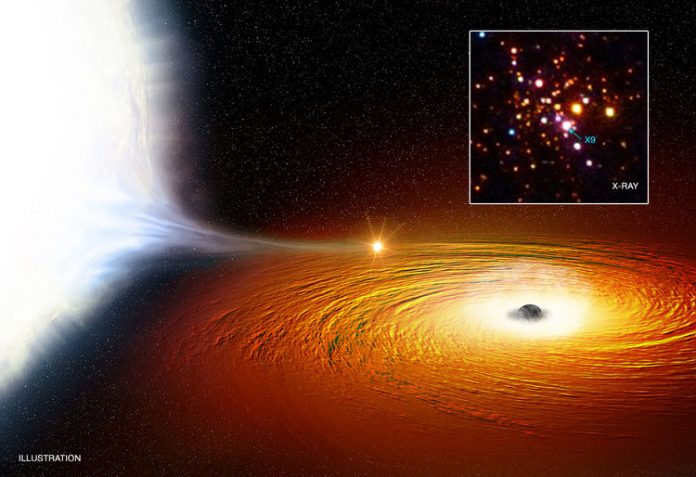Astronomers have found evidence for a star that whips around a black hole about twice an hour. This may be the tightest orbital dance ever witnessed for a likely black hole and a companion star.
Using data from an selection of deep space telescopes, astronomers have found a star whizzing around a black hole, just 2.5 times the distance that is found between the Earth and the moon at almost one million kilometres.
Although that seems like a great distance, in astronomical terms it is merely a hair’s breadth.
The star is also travelling at 6.3 million kilometres per hour, or one per cent the speed of light, meaning it takes just 30 minutes to complete an orbit around the black hole.
It takes 28 days for the moon to complete an orbit around Earth.
The star, which was originally discovered in 1989, is part of a binary star system known as 47 Tuc X9, which had baffled scientists when first discovered, but they are finally revealing some information.
Lead researcher Arash Bahramian from Michigan State University said: “For a long time, it was thought that X9 is made up of a white dwarf pulling matter from a low mass Sun-like star.”
The star, the astronomers say, may have been there for tens of millions of years.
James Miller-Jones from Curtin University and the International Centre for Radio Astronomy Research said: “We think the star may have been losing gas to the black hole for tens of millions of years and by now has now lost the majority of its mass.
“Prior to this discovery, the closest star around any likely black hole was a system known as MAXI J1659-152, which is in an orbit with a 2.4-hour period.
“If the likely black holes in both systems have similar masses, this would imply an orbit three times larger in physical size than the one we found in X9.”
Eventually, the black hole is likely to strip away all the properties of the star.
Co-researcher Craig Heinke said: “Eventually so much matter may be pulled away from the white dwarf that it ends up only having the mass of a planet.
“If it keeps losing mass, the white dwarf may completely evaporate.”















